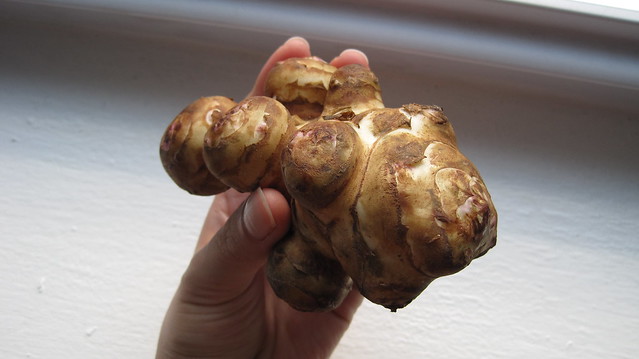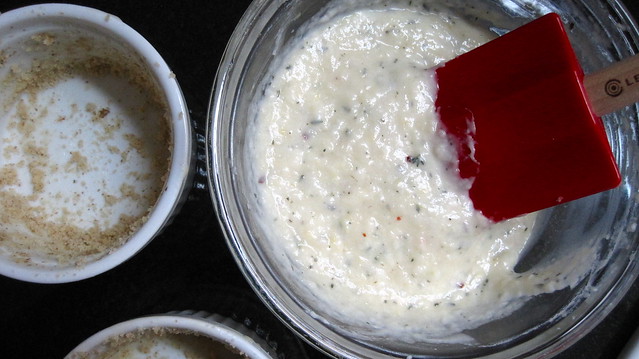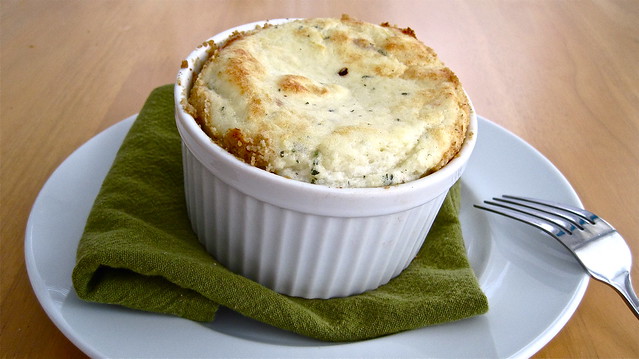Meet my favourite root vegetable, the sunchoke. I know, set alongside the season's other abundances--the acorn squash, the honeycrisps, the sweet potatoes, even--he's not much to look at. In fact, you could say that he's a bit of an ugly duckling. But don't be put off by his strange, knobbly appearance. He's a good one to have around--mildly sweet and just a tad earthy, reminiscent of mushrooms and artichokes. I think he'd play well with other root vegetables, maybe roasted with coarse sea salt, thyme, and lots of olive oil. But I've never had the chance to attempt something like that. See, the thing is, sunchokes are hard to come by, at least in my experience. I used to get them from one particularly adventurous farmer at the market back home. She was always selling some weird and wonderful vegetable that I'd never heard of, and she convinced me to give her sunchokes a try one day. I was back for more the next week. I loved them. That was a couple of years ago. I've only seen them around a few times since.
So whenever I have gotten my hands on some sunchokes in the past year or so, I've done one of two things. The first is really the best way to have them if you're new to them. You'll get to see what they're all about. Once you've peeled them, just slice them into coins a quarter-inch thick and sauté them in a good amount of butter. They're ready when they've turned crisp and thoroughly golden and have sweet and creamy centres. This is the way to enjoy them when they're in season. Sometimes I fold them into omelettes this way.
The second is for the long haul, for those long months in which you won't see a single sunchoke anywhere. Simmer your sunchokes in lemony water until tender, then drain and purée in a food processor until smooth. Transfer your purée to a zip-top bag and tuck it in the freezer. Then, at your leisure--in a week, or even four or five months from now--you'll be able to make Yotam Ottolenghi's sunchoke soufflé.
This soufflé has been a favourite of mine for a while now. I've made it four or five times since early spring--basically, whenever I could find enough sunchokes for the purée. I always make more purée than the recipe calls for and divide it into batches (enough for two or four individual soufflés) for the freezer. You never know when you'll need to impress someone. This soufflé has you covered. It's luxurious on the tongue but without being heavy. Its flavours are fittingly delicate--wisps of lemon, sunchoke, thyme, and goat's cheese held aloft, as it were, in a creamy cloud-mass of egg white and béchamel. And with its pretty, puffed, golden cap, you'll almost hesitate to take your fork to it. But don't--dig up those soft, creamy mounds, those buttery, walnut-crusted edges. It'll be marvellous.
I'm not sure why soufflés have been made out to be so difficult to prepare. They're not--you just need to know a thing or two about beating egg whites. A lot of it is just preparation--make sure that your whites are at room temperature (they beat better this way) and that your bowl and tools are perfectly dry and clean (any fat will interfere with the process). The rest is a matter of care--start out slow to break down the protein bonds, increase your speed once the whites have turned bubbly and greyish, start checking your peaks when the whites have turned foamy, thick, and glossy. And finally, be gentle with your beaten egg whites when you fold them into the other ingredients. Using a broad, flexible spatula, turn the mixture over onto itself, give your bowl a quarter turn, fold again, and repeat, just until everything is combined. Let the oven do its magic. Your work is done.
A few things about sunchokes: sunchokes are also commonly known as Jerusalem artichokes, though the plant of which they are tubers is actually a species of sunflower native to North America. Sunchokes are typically available starting in October, but you can find them as late as March--farmers still dig them out of the ground in early spring. They seem to come in two basic varieties--the really knobbly ones, like those I found at the grocery store a couple of weeks ago, and the long, tapered ones that kind of look like parsnips. The difference doesn't go much further than that--the latter are just less of a pain to peel, so count yourself lucky if you can find that kind. Choose sunchokes that are firm, smooth, and unblemished. If they're pinkish in some spots, that's okay. It's an effect of the soil they grew in. If you live in the Chicago area, I've ordered sunchokes from this grocery delivery service. It hasn't offered them so far this season, but they were available for a few weeks last March.
Sunchoke Soufflé
Adapted from Yotam Ottolenghi's soufflé at The New Vegetarian
Note: About doneness. If the photo that accompanies the original recipe is any indication, your soufflés should have deeply golden caps when they're ready. I've always baked mine for the full 18 minutes, and they've always been just a touch golden. This might be due to the fact--I'm a little embarrassed to say--that I've completely overlooked the instructions about preheating the sheet pan and baking the soufflés in the top-third of the oven every time I've made them. I don't know how that happened, but I'll update these headnotes once I've followed the recipe properly. Update 01-06-12: I pre-heated a sheet pan as directed, and it made no difference to the appearance or doneness of the soufflés! About the goat's cheese. Ottolenghi doesn't specify what kind of cheese to use, only that it should be hard. I've stuck to goat's milk gouda, since that's what's most readily available in my neighbourhood, but feel free to experiment and tell me about it. The gouda, by the way, is pleasantly goat-y but milder than chèvre. About quantities. Call me obsessive, but I weighed my sunchokes before peeling and trimming, after peeling and trimming, and, finally, after simmering and puréeing, just to see whether your really needed to buy 300 g of sunchokes to get 130 g of purée. I don't think you do. I lost about 100 g of sunchoke to peeling and trimming (all those knobbly bits) or about 20% of their total weight (507 g), and I lost about another 75 g during cooking or about 18% of the remaining weight. So count on losing about 35% of the sunchokes you buy. That means, you should be able to scrape by with just 200 g of sunchokes to make four individual soufflés. About freezing. I try to get my sunchokes cooked and puréed as soon as I can after bringing them home from the store, so usually, they end up in the freezer. I've made soufflés with purée that had been frozen for about five months. The flavour and quality weren't noticeably different. Freeze your purée in freezer-safe zip-top bags and thaw it in the refrigerator the night before making the soufflés.
Grated zest and juice of half a lemon300 g sunchokes (see headnotes)
30 g walnuts
60 g / 4 tablespoons unsalted butter
25 g / 2 tablespoons + 2 1/2 teaspoons all-purpose flour
1 cup milk
2 large eggs, separated (egg whites at room temperature)
1/4 teaspoon chilli flakes
1/2 tablespoon chopped thyme
120 g hard goat's cheese, grated (see headnotes)
1/4 teaspoon salt
Preheat the oven to 400 degrees F. Move an oven rack into the top-third of the oven and put a baking sheet on it; this will help the soufflés rise.
Pour the lemon juice into a medium saucepan and add enough water to half-fill the pan. Peel the sunchokes and immediately drop them in the water so that they don't discolour. Once they're all peeled, bring to a boil and simmer for 40 minutes, until soft. Drain and transfer to a small food processor bowl. Work to a purée, adding a little water, if needed, to bring it together. You will need exactly 130 g of purée.
Put four 10-ounce ramekins in the fridge to chill. Blitz the walnuts until powdery in a clean coffee mill. Melt half the butter and brush the insides of the ramekins. Spoon walnut powder into each ramekin and turn the dishes so it coats the base and sides. Tip out any excess powder.
Over moderate heat, melt the remaining butter in a medium pan. Stir in the flour, cook for a minute, then gradually add the milk, stirring, until the sauce is thick and bubbles appear on its surface.
In a large bowl, mix the 130 g of sunchoke purée, the egg yolks, chilli, thyme, cheese, lemon zest and salt. Add the sauce and stir until smooth. Set aside to cool down.
Put the egg whites in a large, clean copper or glass bowl and whisk until stiff but not dry. Add a little of the egg white mix to the sunchoke base and stir to loosen, then fold in the remaining egg whites with a large, flexible spatula, taking care to retain as much air as possible. Fill up each ramekin with the soufflé mix so it comes up 1.5 cm short of the top.
Place on the heated baking sheet, and bake for 12-18 minutes, until golden brown and risen well. Serve at once.
Serves four.




This post is reason enough to go out and buy little ramekins and then of course go on an extensive hunt around Zurich for sunchokes. Admittedly I've never heard of a sunchoke, let alone tried one. Thanks for sharing. Soufflés have always scared me and I'm not even sure why. I'll let you know how the hunt/baking goes if I find them.
ReplyDeleteTalley, you might find sunchokes in the regular grocery stores like Migros or Coop in Switzerland. I have seen them there before.
ReplyDeleteThe soufflé sounds great, I have never made one before. I should give it a try, they don't sound that difficult to make. Thanks for the encouragement!
Talley, I'm glad you liked the post. I hope that your hunting and baking goes well, and I'd love to hear about it. Apparently, though sunchokes are native to North America, they're more commonly cultivated in Europe these days. So, you might have better luck than I've had finding them at the store.
ReplyDeleteLena, it's good to know that you're encouraged :) Soufflé is one of those things that makes you look brilliant when you bring it to the table but really isn't that hard to pull off. That said, even though soufflé isn't hard to master, it's still exciting to make every time. I usually find an excuse to stay in the kitchen while the soufflés bake and repeatedly peek into the oven window to see if they've risen yet.
I'm actually thinking about making a pumpkin souffle, do you think I could just substitute the sunchokes with pumpkin? Or are sunchokes more starchy like potatoes? The pumpkin souffles I found via google are sweet, not quite what I was thinking of. I'll probably just have to give it a try and see if it works, but I just wanted to know what you think.
ReplyDeleteLena, sunchokes are definitely a little starchier than pumpkins but not nearly as starchy as some potatoes. As long as you get your pumpkin into a nice, smooth purée, I think it should work just fine. Let me know how it goes! I hadn't thought of substituting another fall-vegetable purée for the sunchoke one, but now that you've got me thinking, I'll have to try it out.
ReplyDeleteKatie, I think your sunchoke is a very handsome vegetable. I've not tried any variety of artichoke, yet, but I'm keeping an eye out for them. I've also been too worried about trying souffles myself because people seem to panic about them so much, but your post puts me more at ease with the whole thing.
ReplyDeleteI also like how you use your freezer for things like this. We only really use ours for peas, ice cubes and lazy day pizzas at the moment, but I've been reading Nigella's 'how to eat' recently, and she talks about treating your freezer more like an extended pantry/store cupboard, so I've been thinking about utilising it more effectively.
Zoe, I hope that you persuade yourself to make a soufflé of one sort or another sometime soon. You'll be proud when your soufflé puffs golden in those last few minutes in the oven. It's like magic.
ReplyDeleteI don't use my freezer as well as I should. It's mostly stocked with odds and ends (some chopped rhubarb from the spring, a few maple danishes to be baked, etc.) But my favourite use for the freezer is definitely for extra unbaked scones and biscuits. Since they're best a few minutes after being pulled from the oven, I will usually freeze most of a batch. Then, when I've run out of bread and don't have anything else to eat for breakfast, a hot scone is just 20 minutes away.